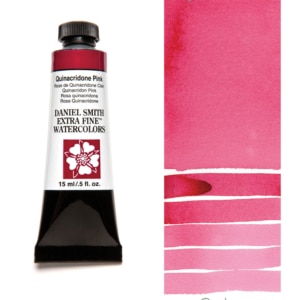In this post, I’ll share some tips about which watercolor paints that I buy and how I best use those paints to avoid mixing mud.

In terms of brands of watercolor paints, I almost exclusively use DaVinci Watercolors, and I buy the large 37 ml tubes of that paint. I have decided that this is the best buy in premium watercolor paint. I usually order my paint from Dick Blick, and here is how the DaVinci watercolors are described on their site: “Da Vinci takes the name of their company very seriously. Their paints are exciting, intense, and rated among the best in the world for quality. The paints are permanent, with the highest tinting strength and pigment concentration available. However, they are especially soft, with a creamy consistency for smooth, easy dispersion with water. Available in both 15 ml (.51 oz) and 37 ml (1.25 oz) tubes.”
In the following post, I begin to explain how I manage to paint with a wide range of colors without creating a muddy mess:

I explain how I use the color wheel to shade or to allow my colors to darken. Yellow is the lightest color on the color wheel, and violet is the darkest. I shade my colors by moving one step at a time away from yellow toward violet.
I also explain that there are both cool and warm versions of several of the paint colors and that I am careful where I mix each.
Let’s look at yellow.

The coolest yellow paint that I use is Cadmium Lemon, and that is the yellow that I use to shade into greens. I also buy leaf green, and that is my lightest yellow-green paint.


If I want to make darker, more yellow-orange tones, I do not use Cadmium Lemon. Rather, I use Cadmium Yellow. If I want a very light yellow, I begin with Cadmium Yellow Light. If I want a more yellow-orange tone, I begin with Cadmium Yellow Medium.



I buy the following tubes to shade from yellow toward orange. I use the paints in this order:

Cadmium Yellow Medium

Cadmium Yellow Deep

Cadmium Orange

Cadmium Red Light
I stop mixing yellow with the reds after Cadmium Red Light.

Cadmium Red Medium is almost a neutral red. I use this color red when I want a true red.
My darker reds have violet in them, and violet and yellow make brown.

Alizarin Crimson has a great amount of violet in it. If I want to lighten this color, I can use Cadmium Red Medium, but I don’t use Cadmium Red Light with Alizarin Crimson. Cadmium Red Light has a great amount of yellow in it and again, violet and yellow make brown.

Fireball Hardy Red Hibiscus – Jacki Kellum Watercolor Painting
In Fireball, you can see that I began with Cadmium Yellow in the lightest area of the flower and that I carefully graduated to Alizarin Crimson, but I did that one step at a time. I did not allow the yellow and the crimson to touch each other.
It appears that I used Sap Green in the leaves, and I may have used Hooker’s Green there, too.


To darken the green, I used Phthalo Blue.

I used Prussian Blue and Indigo in the darest spots:


I used Cadmium Yellow and Ultramarine Blue in the background. I washed the yellow in first, and I allowed it to fully dry before I washed Ultramarine Blue next to it. I do not want Ultramarine Blue and Cadmium Yellow to mix. Ultramarine Blue has Violet in it, and yellow and violet create mud. I darkened the Ultramarine Blue with Ultramarine Violet.
– 


Boy with Curls – Jacki Kellum Watercolor Painting
I use Cerulean Blue and Cobalt Blue to mix flesh tones:



In the Pink – Jacki Kellum Watercolor
Pink is a Horse of a Different Color. To create pinks, I use Permanent Rose Quinacridone and Quinacridone Violet.


For pink, I also buy the watercolor paint Opera, but DaVinci does not make that color.
 Daniel Smith makes a nice Opera color.
Daniel Smith makes a nice Opera color.
Over and over, I have tried to explain how NOT to mix browns, but occasionally, we need browns. Following are the browns that I use–in color order from light to dark.
 Naples Yellow
Naples Yellow
 Yellow Ochre
Yellow Ochre
 Burnt Sienna
Burnt Sienna
 Burnt Umber
Burnt Umber
 Raw Umber
Raw Umber
 Sepia
Sepia